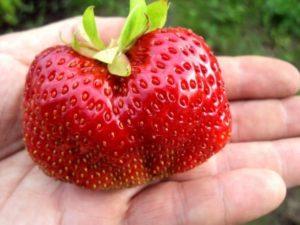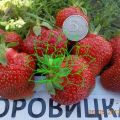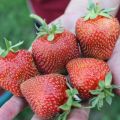Description and characteristics of the Elsanta strawberry variety, cultivation and care
The Elsanta strawberry variety has proven itself well in gardeners' beds and in industrial cultivation. The plant is unpretentious in care, does not require abundant dressing. But the important point remains the requirement for watering, since the bushes are sensitive to heat and drought. An advantage is the excellent taste of berries, their density, meatiness, which ensures the duration of storage, resistance to transportation.
Description and characteristics of the variety Victoria Elsanta
When choosing a variety for cultivation, attention is paid to varietal indicators: yield, characteristics of fruits, resistance to diseases.
Varietal features
Strawberries have a number of varietal characteristics:
- plant of medium ripening;
- excellent taste indicators;
- forms a small number of whiskers, respectively, and sockets;
- the bushes are medium in size, not spreading;
- the bush forms up to 5 peduncles;
- the variety is hygrophilous.
Berries
The berries have an expanded conical shape with a specific shine. They are called “lacquered”. The color of the fruit is bright red, the nose stands out with a lighter shade. They are characterized by medium size, weighing 45 g. Large berries are found. The pulp is reddish and pink, relatively bright, sweetish with a pleasant sour note.
Berries are used fresh, for thermal processing, freezing. The peduncles are easily separated. The fruits have a dense structure, perfectly tolerate transportation over long distances, and retain their original appearance for 3-5 days.
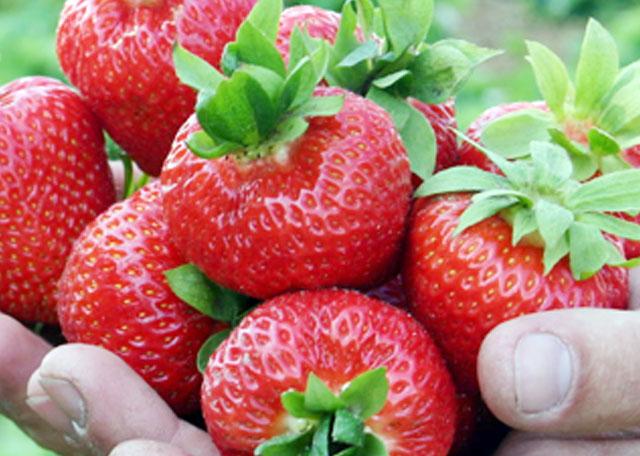
Productivity
The yield is quite high, up to 1.6 kg per bush. Fruiting begins in the medium term, lasts a fairly long period of time.
Sustainability
The plant is immune to white and brown spots, gray rot, but has no protection from powdery mildew. Also affected by root rot. It is characterized by low frost resistance, therefore, requires covering for the winter season.
Breeding history
Obtained in Holland at the end of the 20th century, this variety quickly gained popularity. The strawberry became the product of a selection by crossing Holiday and Gorella. Whatever new species appear, this plant has been and will be a favorite among gardeners.

Natural Growth Region
It grows well in film tunnels, in open beds. Cultivated in the forest-steppe, Central Russia, Polesie. The increased yield is obtained with the tunnel growing method. It is worth considering that the variety does not have frost resistance, therefore, shelter for the winter is important. But it also tolerates drought rather poorly. In Crimea, in the south of Ukraine, Russia is recommended to use drip irrigation to keep it dry.
In the industrial direction, except for the indicated regions, strawberries are cultivated in the Netherlands, Poland, Croatia.
Plant advantages
Gardeners highlight the following positive aspects of the plant:
- large fruits with characteristic taste;
- increased productivity;
- fruits tolerate transportation;
- bushes do not require abundant dressing;
- the variety is not afraid of a number of fungal diseases, verticillosis.
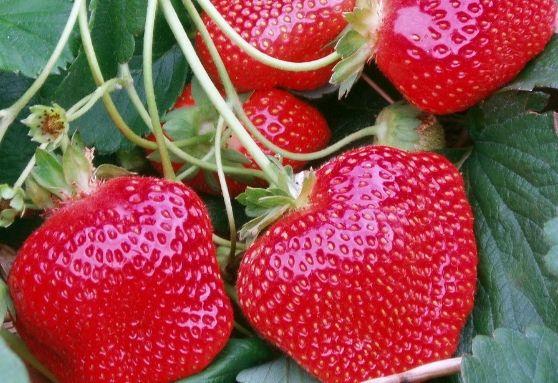
Disadvantages of strawberries
In addition to the positive aspects, when choosing a variety for planting, it is important to pay attention to negative points:
- weak frost resistance, which does not allow cultivation of strawberries in regions with severe weather conditions, at temperatures below -14 aboutWith no cover dies;
- requires regular watering;
- not resistant to root rot, powdery mildew.
Features of agricultural technology
Care and cultivation presuppose the observance of certain rules of agricultural technology. To obtain a result, the beds must be renewed every 4 years.
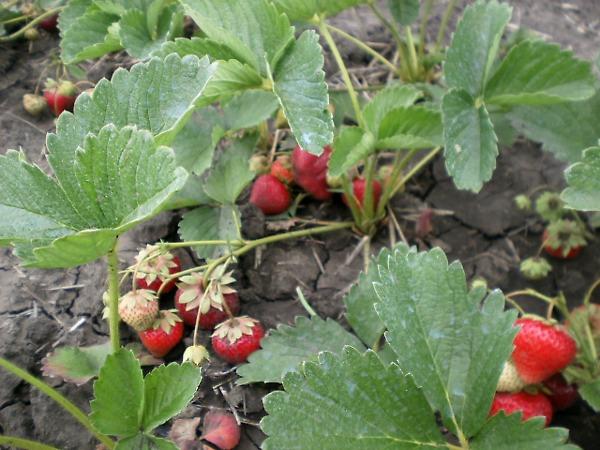
Site selection and preparation
The plot is chosen flat, sunny or with weak shade, protected from northern winds. Before planting young bushes, the land must be prepared:
- plow;
- fertilize: manure or compost, calcium chloride, superphosphate;
- break breasts;
- pour well, stand for at least a day;
- loosen the ground and dig holes.
Step-by-step instructions for planting
It is recommended to plant strawberries in autumn, not earlier than September. When planted in spring, the bushes give small fruits.
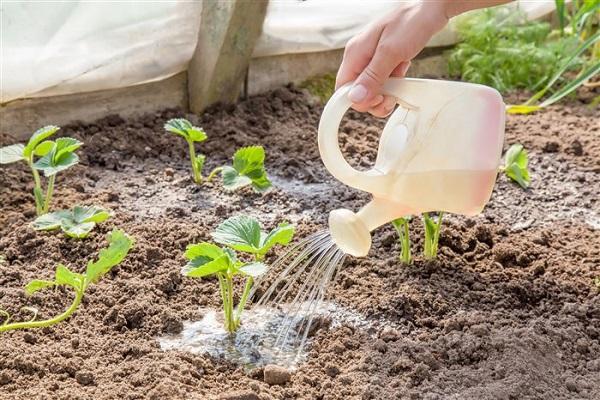
Landing features:
- Produced in wet weather or in the evening.
- It is recommended to plant in a two-lane way. The distance between the bushes is 0.4 m, between the rows - 0.25 m.The depth of the planting holes is 8 cm.
- Pour water into the hole, lay the seedling.
- Sprinkle with soil, compact the ground thoroughly.
- Mulch the planting with peat, needles, humus, compost, straw.
Loosening the soil
Loosening the soil and removing weeds are important steps in strawberry care. Produced once a week. It is necessary to ensure the ventilation of the beds, the prevention of fungal diseases.
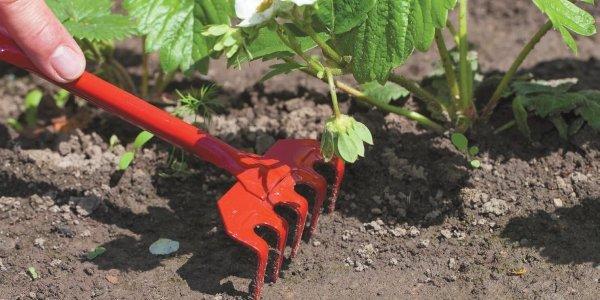
Watering and feeding
Within 10 days after planting young bushes, not abundant, but frequent watering is important. Further watering is carried out less frequently, but more abundantly. The roots will deepen, making the plant resistant. Then the strawberries will be ready for winter. In spring, hydration is again considered a key requirement for care. When fruiting, a large amount of water is not required so that the berries do not become watery. It is enough to maintain the required water balance. On hot days, irrigate the bushes.
A feature of this variety is the moment that the bushes lend themselves to hardening. If they are not fed additionally and not fed with mineral fertilizers, then in one season strawberries are able to acquire endurance and resistance.
This will allow in the future to reap the harvest without much labor and money. Standard spring and autumn feeding is enough to get a good harvest. Organic matter is introduced in autumn. In the spring, when the snow melts, apply urea and nitrogenous fertilizers under the bushes. It is recommended to apply complex fertilizers in the 3rd year of fruiting, when the plant is already depleted.
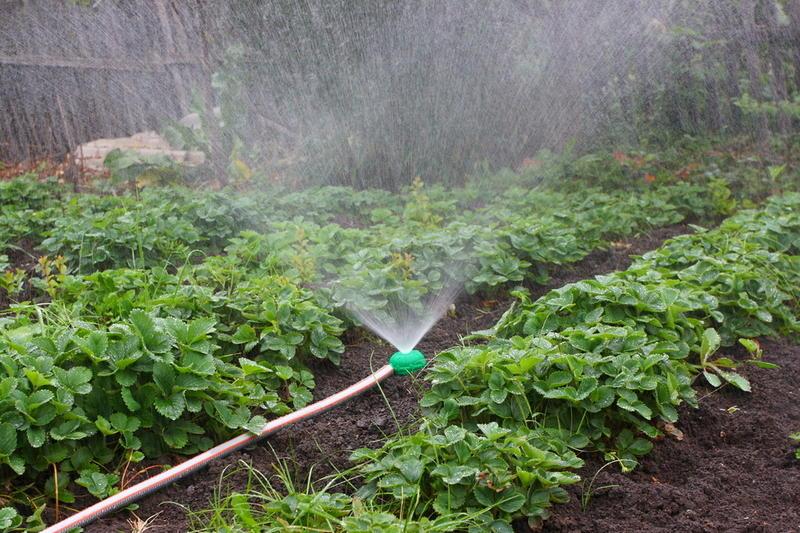
Mulching
An important requirement in the care process is mulching the bushes. This is necessary to retain moisture, especially in hot, dry weather.Also, such a procedure is the prevention of the development of fungal diseases, and the berries remain clean, not in contact with the ground.
Mulching is done immediately after the young seedlings are planted. On adult beds, it must be produced already during the flowering period so that the peduncles do not come into contact with the ground. For mulching, it is recommended to use needles, straw, dry grass, sawdust, peat, humus.
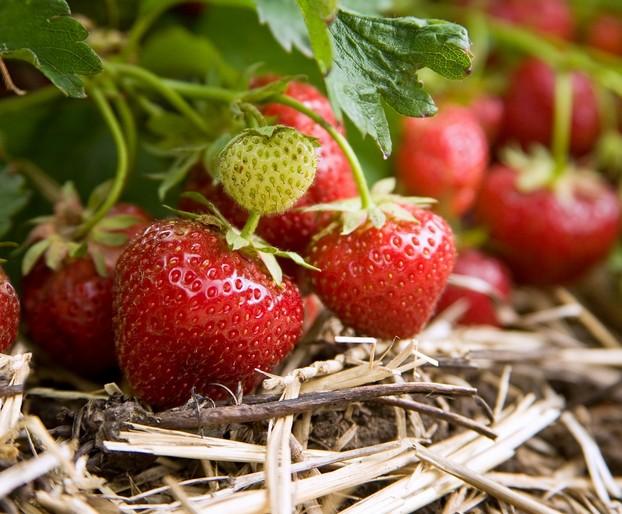
Pruning and wintering
There are two opinions about trimming the leaves. Some people believe that foliage serves as a cover for the kidneys in winter. Others argue that the pruning produced stimulates the shrub for future yields. In any case, when pruning, it is important to cut off only the leaf blades and whiskers, leaving the stems. Cover the bushes before the onset of frost. Covering is done after initial freezing to harden the plant. With good shelter and snow cover, the plant can withstand frosts down to -30 aboutFROM.
Preparing strawberries for winter
Any plant requires preparation for winter. In addition, it should be noted that this strawberry is not hardy.
It is necessary:
- clean the bushes from diseased (if any) and injured leaves;
- treat from various harmful insects;
- loosen the soil, but not deeply, so as not to injure the root system, otherwise it will not recover before the onset of the first frost;
- mulch with peat, sawdust, dry grass, needles or foliage.
- cover the strawberries using natural material to prevent the plant from rotting.
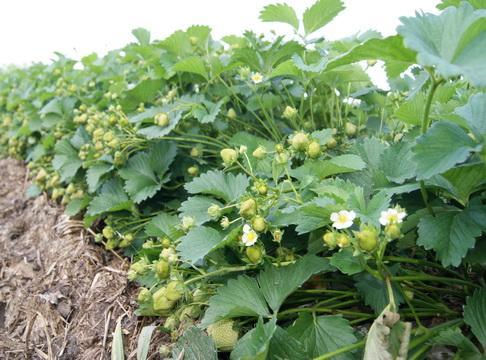
Reproduction methods
Each gardener chooses the best and most convenient way of planting strawberries. There are the following breeding methods:
- bush division;
- mustache;
- seed material.
Mustache
When propagating with a mustache, healthy, strong bushes are necessary. This requires:
- choose a powerful mustache on the bush, bend it to the ground and fix the outlet;
- cut off the rest of the mustache;
- before planting, dig a rosette with a root ball of soil, cut off the mustache;
- plant in a prepared hole.
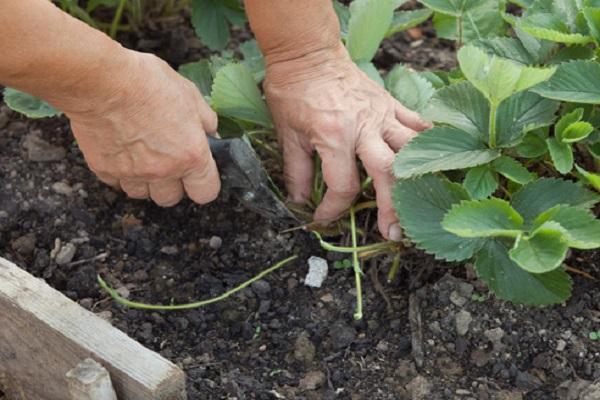
Dividing the bush
With this method, dig up a healthy strong plant, divide it into several parts. Each part must have a full power socket with 2-4 sheet plates. To facilitate dividing, place the bush in water.
Seeds
Since the variety is hybrid, seed propagation is extremely rare. With this method, there is little chance of maintaining maternal performance.
To get young bushes from seeds, you must:
- choose a healthy berry, cut the skin thinly and dry.
- prepare containers with earth.
- 60-70 days before planting, spread the seeds on the ground, sprinkle with a layer of snow, place in the cold for 10 days;
- put in a warm place, irrigate as the top layer dries;
- plant seedlings with 3-4 leaf plates in a prepared place.
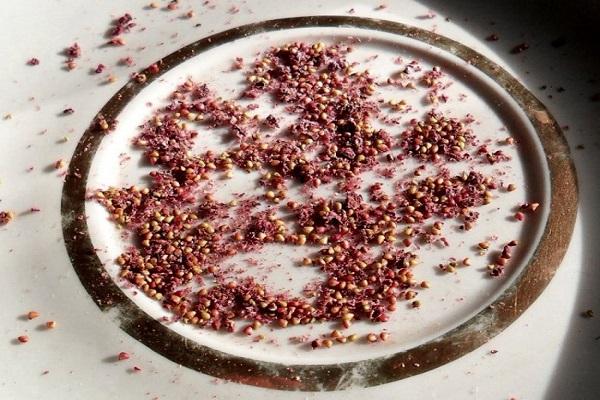
Diseases and pests
The roots are considered the most sensitive part. They are susceptible to rot, fungus. As a rule, you cannot get rid of them. The way out is to destroy the bush.
An important measure is prevention:
- timely cleaning of old foliage;
- dig up and destroy diseased bushes;
- disinfect the soil under diseased bushes;
- it is necessary to mulch and weed the soil in a timely manner;
- the beds are changed every 4 years;
- before winter, treat the soil with a solution of copper emulsion or Bordeaux liquid.
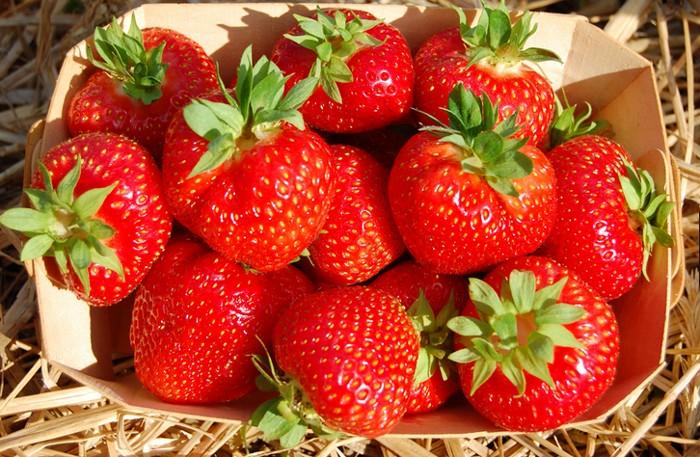
Collection and storage
The collection of berries for sale, long-term storage and transportation is carried out unripe. They are placed in special containers and placed in the cold. The storage period for berries under room conditions is 3 days, and in the refrigerator the harvest will remain fresh for 5 days.
It will not be difficult to grow this unpretentious berry with excellent taste.The main point during cultivation is the protection of the plant from frost and the obligatory timely watering. Observing these simple rules, it will turn out to please yourself and loved ones with a healthy berry.

